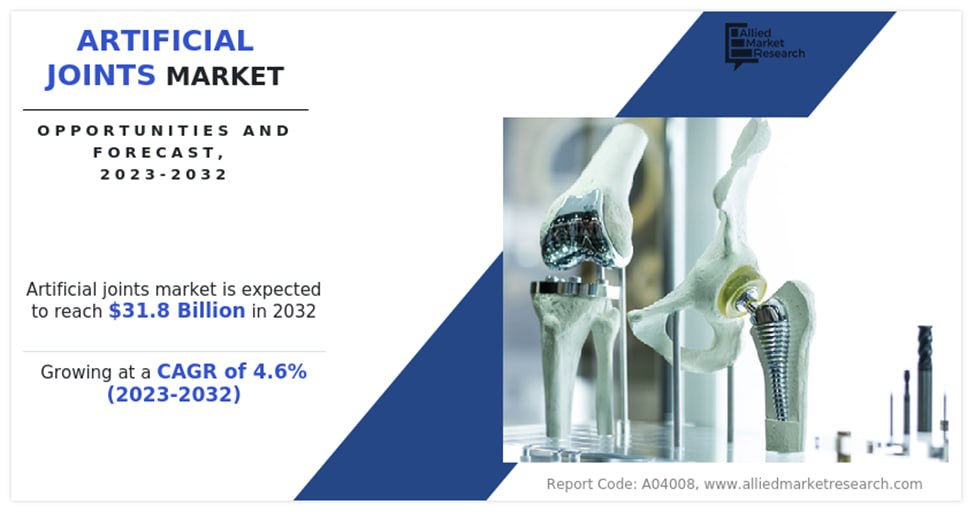An artificial joint is a prosthesis or prosthetic joint, made of plastic, ceramic or metal, which is implanted to replace a damaged or diseased natural joint. The surgical procedure for implanting an artificial joint involves removal of the damaged or diseased joint of knee, hip, shoulder, and other joints. After removal of damaged part, surgeon replaces it with the prosthetic joint. The artificial joint mimics the natural movement of the original joint, allowing for improved mobility and pain reduction.
Allied Market Research published a report, titled, ”Artificial Joints Market by Type (Cemented Artificial Joints and Non-cemented Artificial Joints), Application (Artificial Knee Joints, Artificial Hip Joints, and Others), Material (Ceramics, Alloy, and Others), and End User (Hospitals and Others): Global Opportunity Analysis and Industry Forecast, 2023-2032.” According to the report, the global artificial Joints industry was valued at USD 20.2 billion in 2022 and is projected to reach USD 31.8 billion by 2032, registering a CAGR of 4.6% from 2023 to 2032.
The report provides a detailed analysis of the top investment pockets, top winning strategies, drivers & opportunities, market size & estimations, competitive landscape, and evolving market trends. The market study is a helpful source of information for the frontrunners, new entrants, investors, and shareholders in crafting strategies for the future and heightening their position in the market.






